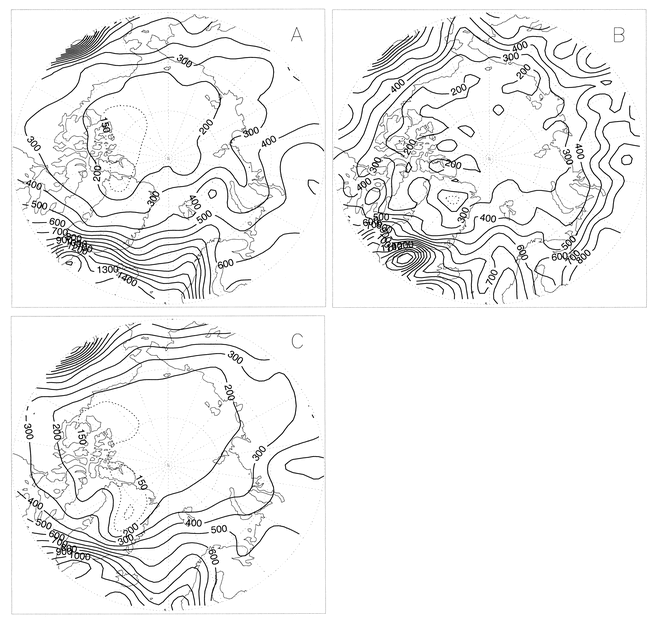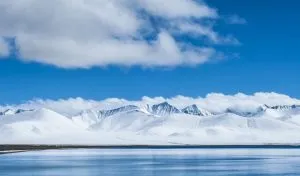There are widely considered to be 5 types of biome; aquatic, grassland, forest, desert, and tundra. But when it comes to the arctic, it has the vegetation of a tundra but the rainfall of a desert, so which is it? a desert or a tundra?
Both, much of the arctic is a desert including the arctic basin, Canadian Arctic Archipelago, and the north pole because the average precipitation is between 150-250mm. This is below 250mm which is the agreed level to be considered a desert.
During the summer months, the temperatures in the arctic rise above 0°C which allows the top layer of soil to melt and vegetation to grow, therefore it is also a tundra.
However, the arctic circle is vast and contains many regions that have more than 250mm of rainfall or where temperatures don’t rise above 0, so you have to look at each region individually, keep reading to learn more about this.
Why is the Arctic a Tundra?
The Köppen climate classification is a widely used system for identifying different types of biome (regions with similar climates, landscapes, animals, and plants)1 (source: BBC).
The classification breaks down the world into five biomes: tropical, dry, temperate, continental, and polar.
Polar biomes can be further broken down into the following two types:
- Ice cap: Monthly average temperatures never exceed 0°C (32°F)
- Tundra: Warmest month has an average temperature between 0-10°C (32-50°F)2 (source: Wikipedia)
Although the arctic remains far below 0°C in Winter, during the summer months, all of the regions that lie over land peak above freezing which makes it a tundra biome.
Along the coasts and northern islands, summer temperatures sit between 4-7°C, whereas along the southern margin the mean monthly temperature is around 10°C.
Most of the sea ice will melt in summer, however, some parts of the ocean remain snow-covered year-round such as the Arctic basin and the Canadian Arctic Archipelago.
However, scientists expect that climate change in the arctic is going to lead to ice-free summers before the end of the century, with some even predicting it in the next few decades3 (source: The Guardian).
Why Is the Arctic a Desert?
The main consideration when determining if something is a desert is a low amount of precipitation (i.e. rain, snow, fog, and mist). The general agreement between experts is that a desert receives less than 250mm (10 inches) of precipitation per year4 (source: Essentials of Geology, 3rd ed, Marshak, 2009).
Annual precipitation in the Arctic is 150-250 mm (6-10 inches)5 (source: University of California Museum of Paleontology) which qualifies it as a desert.
However, the arctic is a vast region that encompasses everything above the arctic circle, a line around the world at 66°30′ north (pronounced: 66 degrees and 30 minutes north).
Precipitation varies across the region from less than 150mm in the Arctic basin and Canadian Arctic Archipelago up to 400mm in Greenland and even 1200mm in some areas that fall into the North-Atlantic storm track and have frequent cyclones6 (source: Wikipedia).
For example, Eureka research base on Ellsmere Island (Canadian territory) receives the lowest amount of precipitation of any weather station in Canada at just 79.1mm per year.
Which Parts of the Arctic are Desert?
There are no official boundaries that define which parts of the arctic are a desert in the geological sense.
However. the below maps show estimated annual rainfall across the region using three different scientific models which can give you a good idea of which parts are desert.
Whilst there are some variations between the maps, they all agree that the north pole, the Arctic Basin, and the Canadian Arctic Archipelago are desert.
How Can the Arctic Be Both a Desert and a Tundra?
As noted by National Geographic, tundra regions typically receive less than 250mm of precipitation annually which means they can also be considered a desert.
Although these are two types of biome, each is measured in a different way which allows for some crossover between the two.
Whether a biome is a tundra depends on the mean monthly temperature whereas deserts are classified by the amount of precipitation.
What is the Arctic Desert?
The Arctic Desert ecoregion is one of 867 terrestrial ecoregions defined by the World Wildlife Fund (WWF) across the world. It covers an area of 161,400 km2 (62,300 sq mi) which is only around 1% of the total arctic area.
These regions are defined by the WWF to aid their conservation efforts and do not reflect the geological definition of a desert. Parts of the Arctic Desert ecoregion have rainfall greater than 250mm per year.
What Are the Largest Deserts?
According to the CIA Factbook, Antarctica is the largest desert in the world, closely followed by the arctic. See the full list of the top 10 deserts on Earth below.
| Desert | Area |
|---|---|
| Antarctica | 14,200,000 sq km |
| Arctic | 13,900,000 sq km |
| Sahara | 9,200,000 sq km |
| Arabian | 2,330,000 sq km |
| Gobi | 1,295,000 sq km; |
| Kalahari | 900,000 sq km |
| Patagonian | 673,000 sq km |
| Syrian | 500,000 sq km |
| Chihuahuan | 362,000 sq km |
| Kara-Kum | 350,000 sq km |
Related Questions
Is a Tundra a Cold Desert?
A tundra is defined by the mean monthly temperatures of a region whereas a desert is defined by rainfall. As tundra regions often receive less than 250mm of rain per year, they are usually a desert too, however, this is not a given. There are also tundra with lots of rainfall.
Why Are There No Trees in Tundra?
Although temperatures in a tundra average out between 0-10 during the summer, this is only enough to thaw the top layer of soil which isn’t enough for a tree to ground roots so they cannot grow.
How Cold Can the Arctic Get?
Temperatures in the Arctic vary significantly across the region and between seasons. Temperatures remain below freezing throughout the winter and can be as low as −37°C (−35°F) in some regions. In the summer, temperatures can peak as high as 10°C (50°F) which allows the surface ice to thaw.
What’s the Difference Between Arctic and Alpine Tundra?
When people refer to the tundra, they are usually talking about the arctic tundra. However, there is another type of tundra known as alpine tundra.
Whilst the arctic tundra is found across the northernmost parts of the world from the north pole and spreading south, alpine tundra can be found across the world but only at high elevations.
Some examples of alpine tundra include Mount Fuji (Japan), Mount Washington (US), and Ben Nevis (UK).



![You are currently viewing Is the Arctic a Desert or Tundra? [Both – Here’s Why]](https://polarguidebook.com/wp-content/uploads/2021/07/Is-the-arctic-a-tundra-or-desert.jpg)
![Read more about the article Where is the Arctic? [4 Ways to Define it]](https://polarguidebook.com/wp-content/uploads/2021/07/where-is-the-arctic-300x176.jpg)

